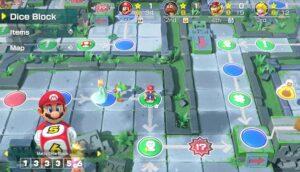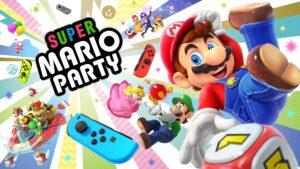Critical Play 7: Mario Party
For my game of chance this week I chose to play Mario Party – a game that relies almost entirely on chance to be played and won, with the exception of a few mini challenges that feature dexterity puzzles to gain extra coin resources. As a party game, mario party takes some initiative in leveling the players as the game progresses. This includes giving players who are further behind extra resources and star points to keep players close together and the game more exciting even down to the end. This allows all players an equal chance at winning, but in my experience this can end up quite frustrating. After a long game and being ahead for the entirety of the game play, the game introduces random awards that have significant effects on the winner of the game. For competitive players this is extremely frustrating as the game play has very little effect on the outcome of the game. On the other hand, leveling the playing field between all players benefits game play as adults and children alike can participate in the same game while still allowing each player to have agency and autonomy.

During the game play, the people I was playing with frequently made snarky comments about dice rolls and mini challenges alluding to their skill with the game. These comments though were almost certainly made in good fun, they didn’t truly believe that they had any say in the dice rolls. Additionally, at the end of the game, when the surprise awards were revealed, everyone yelled and booed as they felt cheated from a fair win–I shared in these sentiments and have had complaints about this since I started playin the game a few years ago.
After playing this game, I feel that this game uses randomness to keep a younger audience engaged. The steep swing from winning to losing throughout the game allows players ages 5-12 to feel included and capable amidst older siblings and parents in a way that is authentic and validating to them. With this in mind I think the game does a great job of keeping engagement while balancing the playing field. One thing I wish they would include is a variable difficulty level that could be selected at the beginning of the game to encompass different age groups, or some kind of setting to reduce the ‘correction factor’ that gives additional resources and prizes to players who are behind–especially when the predictability of the game suffers greatly due to random star awards that only reveal themselves at the end of the game. This lack of transparency makes strategy hard if not impossible, and significantly reduces the fun for older audiences.




